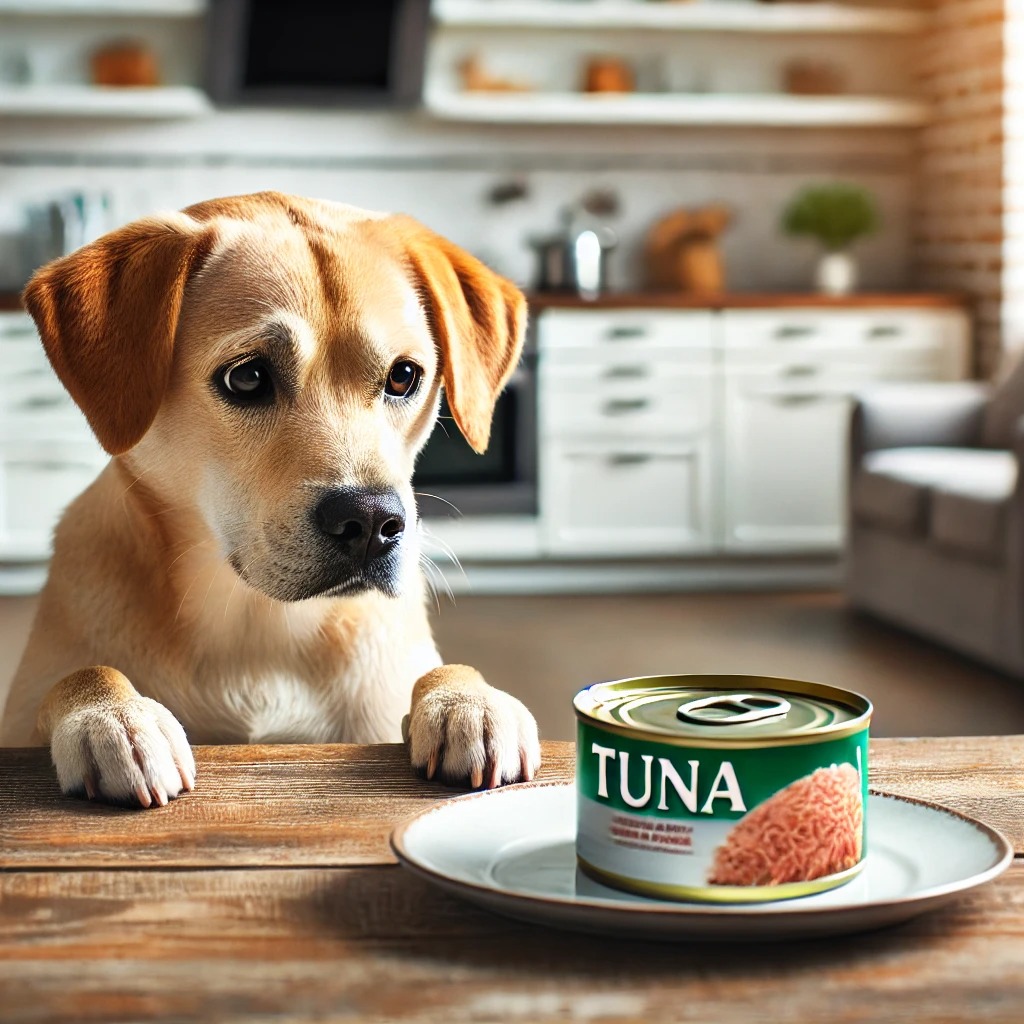
When it comes to feeding your furry friend, it’s important to know what foods are safe and nutritious. One common question pet owners ask is, “Can dogs eat tuna?” This article explores the potential benefits and risks of feeding tuna to your dog, helping you make an informed decision.
The Nutritional Benefits of Tuna
Tuna is a highly nutritious fish that is packed with protein, omega-3 fatty acids, and essential vitamins and minerals. These nutrients can be beneficial for dogs in various ways:
- Protein: Tuna is an excellent source of high-quality protein, which is crucial for maintaining your dog’s muscle mass and overall health.
- Omega-3 Fatty Acids: These healthy fats support your dog’s skin and coat health, reduce inflammation, and promote heart health.
- Vitamins and Minerals: Tuna is rich in vitamins such as B3, B6, and B12, as well as minerals like potassium, magnesium, and selenium, which contribute to your dog’s overall well-being.

Potential Risks of Feeding Tuna to Dogs
While tuna has its benefits, there are also potential risks associated with feeding it to your dog:
- Mercury Contamination: Tuna, especially larger species like albacore, can contain high levels of mercury. Excessive mercury intake can lead to mercury poisoning in dogs, causing symptoms like kidney damage and neurological issues.
- High Sodium Content: Canned tuna often contains added salt, which can be harmful to dogs, especially those with heart or kidney problems.
- Digestive Issues: Some dogs may experience digestive upset after eating tuna, including vomiting or diarrhea.

How to Safely Feed Tuna to Your Dog
If you’re considering adding tuna to your dog’s diet, it’s important to do so in moderation and follow these guidelines:
- Choose the Right Type of Tuna: Opt for fresh tuna or canned tuna in water without added salt. Avoid canned tuna in oil or with added flavorings.
- Limit Portions: Treat tuna as an occasional treat rather than a regular part of your dog’s diet. A small amount once or twice a week is generally safe for most dogs.
- Monitor for Reactions: Introduce tuna gradually and watch for any adverse reactions. If your dog shows signs of digestive distress or allergic reactions, discontinue feeding tuna and consult your veterinarian.

Alternative Fish Options
If you’re concerned about the potential risks of feeding tuna, consider these safer fish options:
- Salmon: Rich in omega-3 fatty acids and generally lower in mercury, salmon is a nutritious choice for dogs.
- Sardines: These small fish are packed with omega-3s and are low in mercury, making them a safe and healthy option.
- Whitefish: Another low-mercury fish, whitefish provides a good source of protein and essential nutrients.

Discover how to include balanced diet to your dog https://kucch.co/dogs-balanced-diet/
